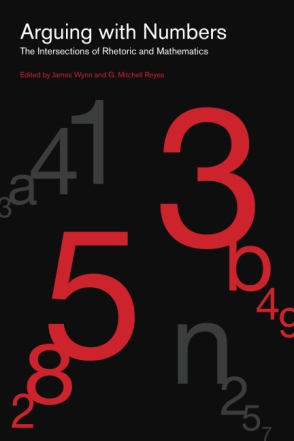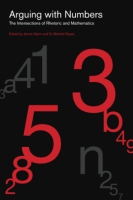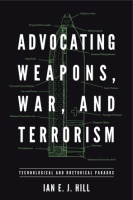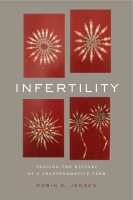As discrete fields of inquiry, rhetoric and mathematics have long been considered antithetical to each other. That is, if mathematics explains or describes the phenomena it studies with certainty, persuasion is not needed. This volume calls into question the view that mathematics is free of rhetoric.
Through nine studies of the intersections between these two disciplines, Arguing with Numbers shows that mathematics is in fact deeply rhetorical. Using rhetoric as a lens to analyze mathematically based arguments in public policy, political and economic theory, and even literature, the essays in this volume reveal how mathematics influences the values and beliefs with which we assess the world and make decisions and how our worldviews influence the kinds of mathematical instruments we construct and accept. In addition, contributors examine how concepts of rhetoric—such as analogy and visuality—have been employed in mathematical and scientific reasoning, including in the theorems of mathematical physicists and the geometrical diagramming of natural scientists. Challenging academic orthodoxy, these scholars reject a math-equals-truth reduction in favor of a more constructivist theory of mathematics as dynamic, evolving, and powerfully persuasive.
By bringing these disparate lines of inquiry into conversation with one another, Arguing with Numbers provides inspiration to students, established scholars, and anyone inside or outside rhetorical studies who might be interested in exploring the intersections between the two disciplines.
In addition to the editors, the contributors to this volume are Catherine Chaput, Crystal Broch Colombini, Nathan Crick, Michael Dreher, Jeanne Fahnestock, Andrew C. Jones, Joseph Little, and Edward Schiappa.
James Wynn is Associate Professor of English at Carnegie Mellon University. He is the author of Citizen Science in the Digital Age: Rhetoric, Science, and Public Engagement and Evolution by the Numbers: The Origins of Mathematical Argument in Biology.
G. Mitchell Reyes is Associate Professor of Rhetoric and Media Studies at Lewis and Clark College. He is coeditor of Global Memoryscapes: Contesting Remembrance in a Transnational Age.
Acknowledgements
Introduction
James Wynn and G. Mitchell Reyes
Part 1 Framing the Intersections
From Division to Multiplication: Uncovering the Relationship Between Mathematics and Rhetoric Through Transdisciplinary Scholarship
James Wynn and G. Mitchell Reyes
In What Ways Shall We Describe Mathematics as Rhetorical?
Edward Schiappa
Part 2 Rhetoric, Mathematics, and Public Culture
The Mathematization of the Invisible Hand: Rhetorical Energy and the Crafting of Economic Spontaneity
Catherine Chaput and Crystal Broch Colombini
The Horizons of Judgment in Mathematical Discourse: Copulas, Economics, and Subprime Mortgages
G. Mitchell Reyes
The Ourang-Outang in the Rue Morgue: Charles Peirce, Edgar Allan Poe, and the Rhetoric of Diagrams in Detective Fiction
Andrew C. Jones and Nathan Crick
Part 3 Mathematical Argument and Rhetorical Invention
Rhetoric and Mathematics in the Saturnian Account of Atomic Spectra
Joseph Little
The New Mathematical Arts of Argument: Naturalistic Images and Geometric Diagrams
Jeanne Fahnestock
Part 4 Mathematical Presentations: Experts and Lay Audiences
Accommodating Young Women: Addressing the Gender Gap in Mathematics with Female-Centered Epideictic
James Wynn
Turning Principles of Action into Practice: Examining the National Council of Teachers of Mathematics’ Reform Rhetoric
Michael Dreher
List of Contributors
Index









